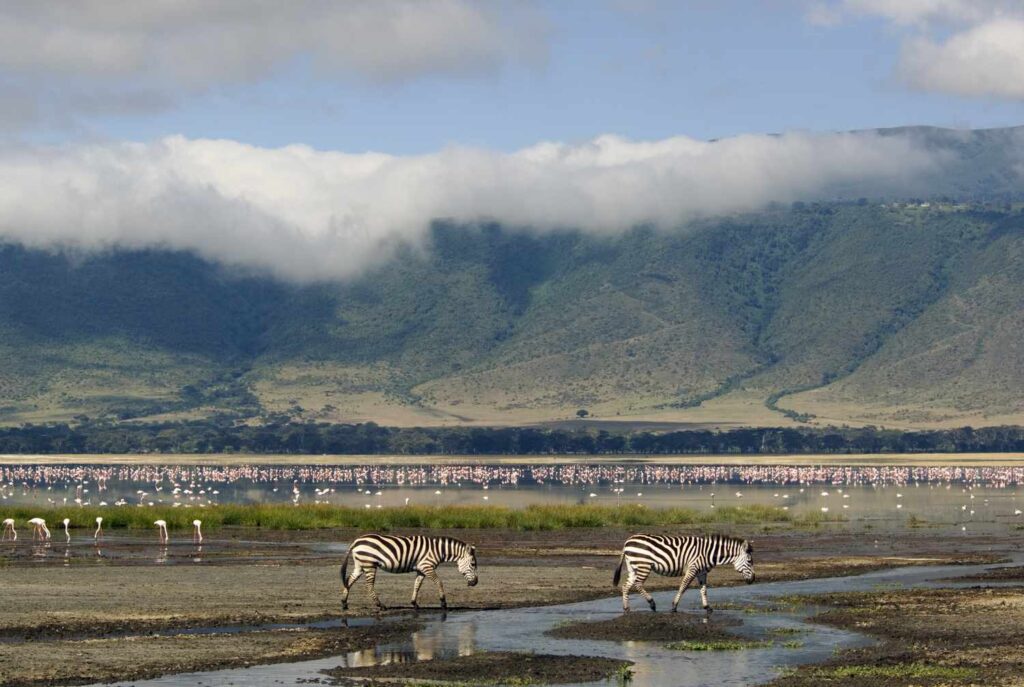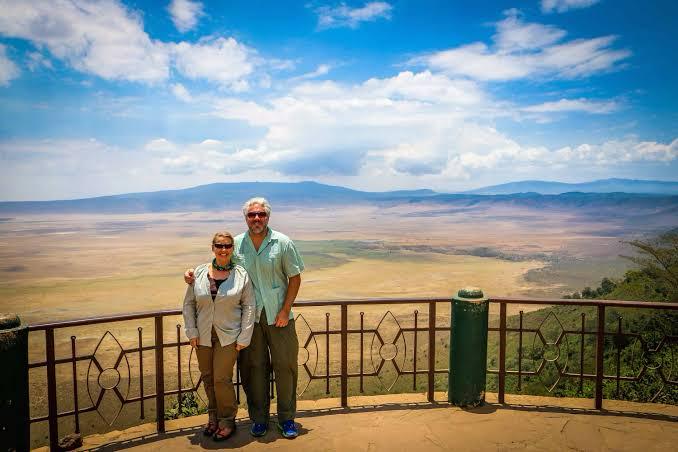Detailed Information
Itinerary
Gallery
Book
TARANGIRE NATIONAL PARK
Tarangire National Park is a captivating wildlife reserve located in northern Tanzania, renowned for its stunning landscapes, diverse ecosystems, and abundant wildlife. Here are details about Tarangire National Park:
Location: Tarangire National Park is situated in the Manyara Region of northern Tanzania, approximately 118 kilometers (73 miles) southwest of Arusha.
Landscape: The park’s landscape is characterized by vast savannah plains, dense woodlands, seasonal marshes, and the meandering Tarangire River, which serves as a vital water source for wildlife during the dry season. The park is bordered by the Great Rift Valley to the west and the Maasai Steppe to the southeast.
Wildlife: Tarangire National Park is renowned for its diverse wildlife population, particularly during the dry season when animals congregate around the Tarangire River. The park is home to large herds of elephants, which are one of its most iconic and abundant species. Other animals commonly spotted in the park include lions, leopards, cheetahs, giraffes, buffaloes, zebras, wildebeests, impalas, and various antelope species. Tarangire is also a haven for birdwatchers, with over 500 bird species recorded, including endemic and migratory birds.
Elephant Migration: Tarangire National Park is famous for its annual elephant migration, during which large herds of elephants migrate into the park in search of water and food.
Activities: The park offers a variety of activities for visitors, including game drives, guided nature walks, birdwatching, and cultural visits to nearby Maasai communities. Game drives provide opportunities to explore the park’s diverse habitats and observe its rich wildlife, while guided walks offer a chance to experience the wilderness on foot and learn about the park’s ecology and conservation efforts.
Accommodation: Tarangire National Park offers a range of accommodation options to suit different preferences and budgets. These include lodges, tented camps, and campsites, both within the park and in the surrounding areas.
Conservation: Tarangire National Park plays a crucial role in wildlife conservation and habitat preservation in northern Tanzania. Efforts are underway to combat poaching, mitigate human-wildlife conflicts, and promote sustainable tourism practices to ensure the long-term viability of the park’s ecosystems.
Overall, Tarangire National Park is a must-visit destination for wildlife enthusiasts, offering a unique combination of diverse landscapes, abundant wildlife, and unforgettable safari experiences in the heart of northern Tanzania.
NGORONGORO CRATER
Ngorongoro Conservation Area, often referred to as Ngorongoro National Park, is a UNESCO World Heritage Site located in northern Tanzania. Here are details about Ngorongoro National Park:
Location: Ngorongoro Conservation Area is situated in the Crater Highlands of northern Tanzania, approximately 180 kilometers (110 miles) west of Arusha. It covers an area of about 8,292 square kilometers (3,202 square miles).
Landscape: The park’s landscape is dominated by the Ngorongoro Crater, a massive volcanic caldera that formed millions of years ago. The crater is the centerpiece of the conservation area and is renowned for its breathtaking scenery and unique ecosystems. Surrounding the crater are highlands, grasslands, forests, and several other volcanic features, including Olduvai Gorge, a significant archaeological site.
Wildlife: Ngorongoro Conservation Area is home to a diverse array of wildlife species, including the “Big Five” (lions, elephants, buffaloes, leopards, and rhinoceroses). The crater’s enclosed nature provides a natural sanctuary for these animals, resulting in one of the highest concentrations of wildlife in Africa. Additionally, the conservation area supports large populations of wildebeests, zebras, hyenas, cheetahs, hippos, and various antelope species.
Ngorongoro Crater: The Ngorongoro Crater is the main attraction of the conservation area, offering unparalleled wildlife viewing opportunities within its confines. The crater’s fertile soils and permanent water sources sustain a diverse range of habitats, including grasslands, forests, swamps, and soda lakes. Visitors can embark on game drives along the crater floor, encountering a multitude of wildlife species against the backdrop of stunning scenery.
Conservation and Culture: Ngorongoro Conservation Area is unique in that it is a multi-use protected area, allowing for wildlife conservation, tourism, and traditional Maasai pastoralism to coexist. The Maasai people have lived in the area for centuries and continue to graze their livestock within the conservation area’s boundaries. Efforts are underway to balance conservation objectives with the needs of local communities, ensuring the sustainable management of natural resources.
Activities: In addition to game drives within the crater, Ngorongoro Conservation Area offers a variety of activities for visitors, including guided nature walks, visits to Maasai villages, and cultural experiences. The conservation area’s diverse landscapes and rich cultural heritage provide ample opportunities for exploration and discovery.
Accommodation: There are several lodges, tented camps, and campsites located within and around Ngorongoro Conservation Area, offering a range of accommodation options to suit different preferences and budgets. Many of these accommodations provide stunning views of the surrounding landscapes and wildlife.
Overall, Ngorongoro Conservation Area is a must-visit destination for wildlife enthusiasts, offering a unique combination of stunning scenery, abundant wildlife, and cultural richness in the heart of northern Tanzania.
Tour Itinerary
Departure: ZNZ to Arusha at 07h00
Departure: Arusha/Kilimanjaro to ZNZ at 16h30 or
19h40
Day 1: Zanzibar – Tarangire National Park
Flight from Zanzibar to Arusha, followed by a drive toward the famously Tarangire National Park for game viewing. Either park offers a solid game-viewing circuit. After the game, drive in the evening, drive to the camp or lodge for leisure, dinner and overnight.
Day 2: Ngorongoro Crater – Zanzibar
After breakfast, you will head towards the Ngorongoro Crater for a game drive. The crater is the world’s largest caldera, with the stunning landscape of Ngorongoro. Its vast expanses of highland plains and concentration of wildlife make this place one of the most exotic natural wonders on earth. Afternoon drive to the airport for departure to Zanzibar.
| PRICE PER PERSON SHARING | |
| ADULT | $1100 |
| CHILD | $850 |
CHECK WITH OUR TOUR EXPERT FOR MORE INFORMATION&BOOKING

























